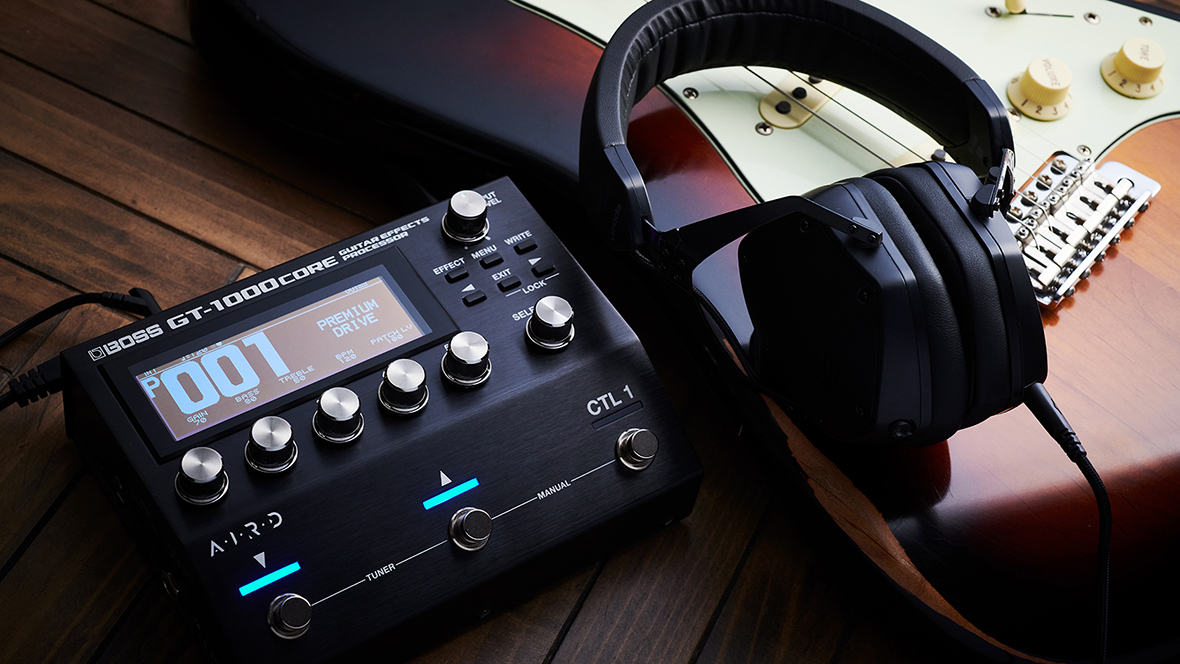Since I’ve been looking at all-in-one guitar things, naturally, I’ve done research and considered all the options. There are units going from $200 all the way up to $3000, and everything in between. But truth be told, even the cheaper ones are still pretty good. So what am I looking for in an all-in-one guitar/bass effect unit? How do you make a choice when there’s so many good choices?
I’m basically going to walk you through the decision making process of how to buy a piece of music gear- or anything, really. This is a lesson on how to wade through choice overload. This is a critical skill for becoming a minimalist.
What do you need?
Let’s say I’m shopping for a pedalboard upgrade. The first question I need to ask is “What am I going to be using it for?” And the second question is related: “What will this allow me to do that I can’t do now?” Because if it doesn’t do more than my current one, it’s not an upgrade, is it?
I would be using it mostly for making ambient music, and some recordings of other stuff. So what features do I need for that to happen? Certain effects, but all these units have good ones. Routing flexibility is a good one- great for experimenting and ambient tones. Good amp models- don’t need a ton, just a few good ones. Effects loops for adding other pedals into the chain. MIDI control.
So, to simplify this, let’s make a list of things my current board does.
- Effects (obviously)
- Power for all the pedals
- Fits in a 36″ x 12″ carry case
- Effects can be further broken down into:
* Amp modeling
* Basic EQ/compression
* Overdrive/distortion
* Pitch shifting
* Multiple track looping
* Reverb and multiple delays (up to 3 different kinds)
* Modulation/chorus/tremolo
* Drum machine
Things my board doesn’t do, but I would like it to:
- Eliminate the need for XLR direct boxes
- Be able to run direct and through an amp in stereo, with separate volume controls
- Be fully (or mostly) controllable via MIDI
- Be smaller and lighter (reduce the number of pedals needed)
- Have more signal routing options (parallel chains, or change effect order)
Also, if I redo the board, I want to reuse as much of what I already have as possible, and sell what I’m not going to need as a way to offset the cost of the upgrade. Hopefully, I could even make money on it (I have a LOT of pedals).
The choices
The next step is outlining your choices. This of course will depend on your needs, budget, and whatever else (availability, timing, etc). So gather your research, and make a list of your options.
All of the units I’m considering are in the $1000 or under range. I might be swayed to go higher than that, but it would have to be worth it, i.e. replacing everything and being capable of much more. Plus, there’s a limit to how much gear I can sell to offset cost… my pedals aren’t worth much more than $1000. So there’s a limit to my budget.
With those things in mind, here’s my all-in-one options:
- Boss GT-1000 ($800 used)
- Headrush Pedalboard ($800 used)
- Line 6 Helix LT ($800 used)
- Mooer GE300 ($750 new)
- Atomic Amplifire 12 ($600 new)
A secondary option is to get the smaller versions of these, and integrate it into my existing board.
- Boss GT-1000 Core ($700 new)
- Line 6 HX Stomp ($600 new)
- Mooer GE300 Lite ($550 new)
- Atomic Amplifire 6 ($500 new)
- Headrush Gigboard ($650 new)
Does this fit my needs?
So now we begin the process of going through each choice’s features and figuring out which ones we can eliminate, and which ones are the best deal for the money. These can be simple Yes/No questions.
All of the units in the first group fit what my board is already doing now (with the exception of having a drum machine). So, pretty much any one of them would be a suitable replacement if I were only replacing what I already have. As an equivalent 1:1 swap, any one of them would work.
The next question is “What other features do I really want to have, and which ones would just be nice?” So once you’ve eliminated the obvious ones, you have to make decisions on things that could go either way.
For me, flexible effect routing is a definite want. That’s something I’d love to do, but just the hardware to run parallel effects (on a traditional board) is super expensive. As far as I know, out of the lists above, only the Helix, GT1000, and Headrush units can do it. And they’re all somewhat limited. Some of these can do two different amplifier models at a time in parallel also.
The Boss GT1000 can split/join the signal chain 3 times, and nested, so you can have 4 parallel effects max. The Helix can do two individual chains, with some parallel routing. The Headrush board can do limited parallel routing… only 2 paths. These can all do dual amps. The Amplifire and Mooer units don’t do any parallel effect or dual amp processing.
Something the Mooer can do that the others can’t is “amp profiling” but that’s not a feature I’m interested in. If you owned several nice amps and you wanted to clone them, that would be worth it. Of the small units, they all have stereo effects loops. The Amplifire 6 and GE300 Lite have XLR outs, the others don’t. Having XLR outs is nice, but not technically necessary. So that is lower on the list.
Thinning The Herd
Once you’ve gone through the list of options and pros/cons, you scratch some of the choices off the list. You should only end up with a couple options. (If you ended up with lots of choices, then either you didn’t list enough needs, or it doesn’t matter which one you go with, and you can get the cheapest one.)
Between the choices I’ve listed, I’ve decided to go with a smaller unit, for a couple of reasons: they’re cheaper, smaller, and allow me to use a few other pedals to cover the things they lack. I’ve decided that having XLR outs isn’t an issue, especially since if I use my Jamman at the end, it can use balanced TRS to XLR cables. No direct box needed.
So my final choices are the GT1000Core and the HX Stomp, mainly for routing options. The Stomp only does 6 blocks, including amps. The GTCore will do 24 blocks, though only 3 can be any type. This means the Core can replace more of what’s in my current rig, for only a little more money. It’s still not a perfect choice, but since it’s small, I can add a few things to the board to cover what it can’t do. Overall, that’s probably the best choice.
Pulling The Trigger
Once you’ve made up your mind, you start working towards that goal. For me, that means I need to start selling off some of my stuff to afford the new thing. It might take a few weeks, or even a couple of months, but I now have a specific goal in mind, and I know how to get there. I will sell off a handful of things I don’t use. After I have the unit, and I see what other things it can replace, I can probably get rid of even more.
If and when I end up pulling the trigger, you can be sure I’ll post about it here. My pedalboard has served extremely well, considering almost everything on it is roughly over 10 years old. Time marches on, and sometimes, it’s just time to upgrade.

